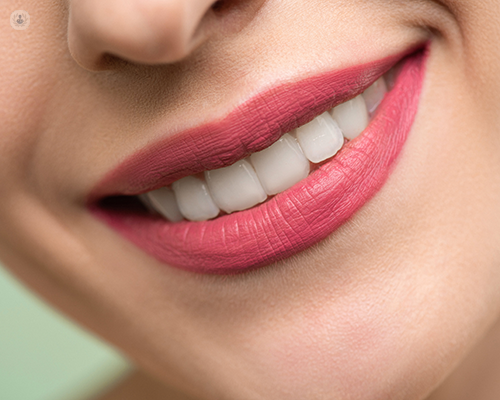Advances in upper lip lift surgery
Written in association with:Upper lip lifts are techniques in plastic aesthetic and restorative surgery to combat the look of ageing on that particular area of the mouth.

Ageing of upper lip skin
The ageing of the lip has well-defined characteristics:
- Increased distance between the nose and lip
- Thinning of the lip surface
- Radial folds
- Accentuation of the nasolabial fold, which is the small depression that lies between the nose and upper lip
- Flattening of the nasolabial groove
Surgery to date has been limited to the excision of a short strip of skin, either in the transition zone of the upper lip and the nose, or at the junction of the lips with the facial skin. A more extensive resection of a strip of skin is presented along the nasolabial folds and nasolabial junction, and some improvements have now been added to this technique to achieve better results.
What does lip surgery involve?
The procedure consists of the excision of a strip of skin. If the nasolabial fold is excessively prominent, the resection can be extended.
The upper lip skin is carefully removed from the subcutaneous tissue at the edges of the incisions. Then two layers of nylon are used in the closure, one in the deep part of the dermis to bring the edges of the wound together and a superficial layer to knit them more closely on the skin surface.
External stitches are removed on the second postoperative day after lip surgery.
Lip lift surgery in severe cases
In patients with more severe ageing changes, a more radical technique is used that also involves the re-sectioning of a strip of skin. When the wound is closed, the skin is sutured to create a simulation of the projection of the crests of the nasolabial groove. The upper lip skin is smoothed out to soften radial wrinkles.
The type of lip surgery performed depends on the needs of the individual patient. If a patient has noticeable wrinkles of the upper lip, a small strip of skin may be resected along the nasolabial junction. If there is ptosis or detachment of prominent commissures and nasolabial folds, resection may be extended to include these areas.
If the nasolabial groove is flattened, a projection of the nasolabial ridge can be created by re-epithelialising two skin strips and suturing the edges of the incision over them. In these cases, the central part of the skin should not be undercut in order to maintain the central depression and, therefore, a more natural appearance.
In patients without a marked nasolabial fold, the approach can be modified, so that all the ageing characteristics of the skin will be treated without creating an extensive scar. This procedure is particularly useful in patients who have undergone a rhytidectomy with sufficient improvement in the nasolabial fold but not in the upper lip.
What happens after upper lip lift surgery?
After upper lip lift surgery, patients are advised to avoid even slight traction on the suture lines for 3 months - they should be very careful when brushing their teeth and using cutlery to eat, and avoid opening the mouth too wide. The patient is also discouraged from sleeping on their stomach for the 3 months after the operation. Direct exposure to the sun should be avoided for 6 months.
The plastic surgeon should be very careful in suturing and making incisions, as well as advising patients to avoid any traction on the scars. Good results have been obtained in patients with fair skin, but upper lip lifts are not recommended for patients with darker skin because of the risk of scar hyperpigmentation in that area and the immediate surroundings.


